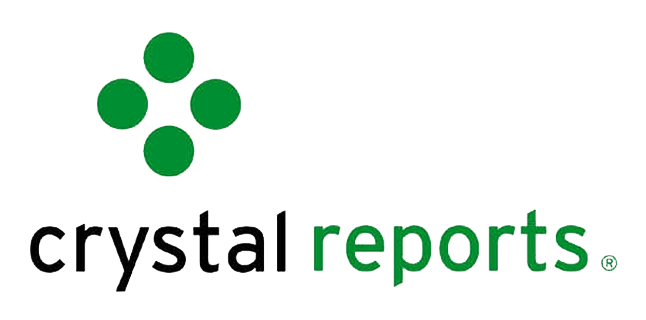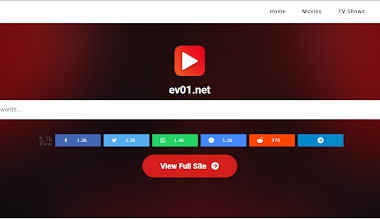In today’s dynamic business landscape, the demand for robust reporting tools has never been greater. SAP Crystal Reports has long been a go-to choice for businesses looking to create comprehensive reports and dashboards. However, as technology evolves and businesses seek more flexible, feature-rich options, the need for Crystal Reports alternatives becomes apparent. In this article, we’ll explore various SAP Crystal Reports alternatives, highlighting their features, limitations, and what sets them apart. Whether you’re a small business or a large enterprise, finding the perfect reporting tool is crucial to your success.
Understanding Crystal Reports

Features of Crystal Reports
Crystal Reports has been a stalwart in the realm of business intelligence, offering an array of features that have made it a preferred choice for many organizations. Some of its key features include:
1. Data Connectivity
Crystal Reports allows users to connect to a wide range of data sources, including databases, spreadsheets, and web services. This flexibility makes it versatile for businesses with diverse data requirements. Whether you need to extract data from your CRM, ERP, or an external database, Crystal Reports provides the means to do so seamlessly.
2. Report Design
The tool provides a robust environment for designing reports and dashboards. Users can create visually appealing reports with various formatting options, charts, and graphs. Whether you’re crafting financial reports, sales summaries, or performance dashboards, Crystal Reports empowers you to design and customize your reports to meet your specific needs.
3. Integration
Crystal Reports seamlessly integrates with other SAP products, ensuring a smooth flow of data between different systems within an organization. This integration is especially valuable for enterprises that rely on SAP solutions for their business operations. The ability to pull data directly from SAP systems streamlines the reporting process.
Limitations of Crystal Reports
While Crystal Reports has served many businesses well, it does come with its share of limitations:
1. Steep Learning Curve
For newcomers, Crystal Reports can be challenging to master. It often requires extensive training and experience to harness its full potential. Learning to create complex formulas, manipulate data, and design intricate reports can be time-consuming, which may not be ideal for businesses looking for a quick reporting solution.
2. Licensing Costs
The software’s licensing costs can be prohibitive for smaller businesses, making it less accessible for startups and SMBs. Crystal Reports’ pricing structure, which often includes various editions with different feature sets, can be confusing. This cost barrier can deter smaller organizations from adopting the tool.
3. Limited Collaboration
Collaboration features are somewhat limited in Crystal Reports, which can be a hindrance for teams that require real-time collaboration on reports. While Crystal Reports does offer options for sharing and exporting reports, it lacks the collaborative features found in some of Crystal Reports alternatives. This limitation can impede the seamless flow of information within organizations.
4. Lack of Cloud Support
In an era of cloud computing, Crystal Reports’ lack of robust cloud support can be a drawback for businesses looking to leverage cloud technologies. While it’s possible to host Crystal Reports Server on a cloud infrastructure, the tool doesn’t inherently embrace the cloud in the same way as some of its competitors.
The Need for Crystal Reports Alternatives

In today’s rapidly evolving business landscape, organizations are continually seeking innovative ways to streamline their reporting processes and gain deeper insights from their data. While SAP Crystal Reports has been a dependable choice for report creation and data visualization, the need for Crystal Reports alternatives has become increasingly evident. This section explores the key reasons why businesses are looking for Crystal Reports alternatives.
1. Demand for User-Friendly Solutions
One significant driver behind the quest for Crystal Reports alternatives is the desire for more user-friendly reporting solutions. Many organizations find that Crystal Reports can have a steep learning curve, especially for users who are new to the tool. Businesses are now seeking Crystal Reports alternatives that offer intuitive interfaces and simplified report design processes to enhance the accessibility of reporting capabilities across their teams.
2. Cost-Effectiveness and Scalability
While Crystal Reports is a robust reporting tool, its licensing costs can be prohibitive for smaller businesses and startups. As organizations grow and data volumes increase, the cost of scaling Crystal Reports can become a concern. Therefore, there is a growing demand for Crystal Reports alternatives that provide a balance between cost-effectiveness and scalability, allowing businesses to expand their reporting capabilities without breaking the bank.
3. Real-Time Data Needs
In today’s fast-paced business environment, real-time data has become a necessity for decision-making. Crystal Reports, while proficient in many aspects, may not always provide the real-time data access and visualization capabilities that modern businesses require. Consequently, companies are exploring Crystal Reports alternatives that can deliver real-time data insights and dashboards to support agile decision-making processes.
4. Integration with Cloud Technologies
With the increasing adoption of cloud technologies, businesses are looking for reporting tools that seamlessly integrate with cloud-based data sources and services. Crystal Reports, historically more oriented toward on-premises solutions, may not offer the level of cloud compatibility that organizations need to harness the full potential of their cloud-based data assets. This has prompted the search for Crystal Reports alternatives that are more cloud-centric and adaptable to hybrid IT environments.
These key factors underscore the need for Crystal Reports alternatives that can offer improved user experiences, cost-effectiveness, real-time data capabilities, and seamless integration with cloud technologies. Businesses are now actively exploring a diverse range of Crystal Reports alternatives to meet their evolving reporting requirements.
Commonly Used SAP Crystal Reports Alternatives

As businesses recognize the need for versatile reporting tools that cater to diverse data requirements and foster informed decision-making, several SAP Crystal Reports alternatives have emerged as robust solutions. These Crystal Reports alternatives offer a broad spectrum of features and capabilities, making them valuable additions to any organization’s reporting toolkit. Let’s delve deeper into each of these Crystal Reports alternatives to gain a comprehensive understanding of their strengths and suitability for various business scenarios.
1. Microsoft Power BI: Empowering Data-Driven Decisions
Microsoft Power BI stands as a formidable contender in the world of business intelligence, equipped with a user-friendly interface and robust data visualization capabilities. Its prowess lies in its ability to seamlessly connect to a multitude of data sources, ranging from databases to cloud-based services, allowing businesses to harness their data efficiently. Moreover, Power BI’s intuitive drag-and-drop functionality empowers users to transform raw data into compelling visualizations and interactive dashboards that drive data-driven decisions. It excels in scenarios where real-time insights are crucial, offering a dynamic reporting solution suitable for organizations of all sizes.
2. Tableau: Unlocking the Art of Data Visualization
Tableau has earned its reputation as a leader in data visualization, offering businesses the means to create stunning, interactive reports and dashboards. Its drag-and-drop interface simplifies data analysis, making it accessible to users with varying levels of technical expertise. Tableau’s strength lies in its ability to handle substantial datasets and deliver real-time insights, a valuable asset for organizations that demand rapid access to critical information. Whether you’re visualizing sales trends, tracking financial performance, or uncovering market insights, Tableau’s visualization prowess ensures that your data tells a compelling story.
3. QlikView/Qlik Sense: Navigating Data Discovery with Precision
QlikView and Qlik Sense have carved a niche as data discovery and visualization tools that excel in providing self-service analytics. These platforms empower users to explore data intuitively, fostering a culture of data discovery within organizations. With Qlik’s associative data model, users can make data-driven discoveries effortlessly. The ability to create dynamic reports and uncover insights in real-time makes QlikView and Qlik Sense indispensable for businesses aiming to gain deeper insights from their data. These tools excel in scenarios where agile decision-making and user-driven exploration are paramount.
4. SAP BusinessObjects: A Comprehensive Suite of BI Solutions
SAP BusinessObjects, closely related to Crystal Reports, offers a comprehensive suite of business intelligence tools. It encompasses reporting, data analytics, and data visualization, making it a versatile choice for organizations invested in the SAP ecosystem. With options for ad-hoc reporting, data exploration, and predictive analytics, SAP BusinessObjects caters to a wide range of business requirements. Its seamless integration with other SAP solutions ensures a unified data ecosystem within an organization, making it an attractive choice for large enterprises seeking an end-to-end BI solution.
5. JasperReports: Open-Source Reporting for Java Applications
JasperReports shines as an open-source reporting library and tool designed for Java applications. It caters to organizations with specific Java-based reporting needs, allowing them to embed reports seamlessly into web applications. JasperReports’ open-source nature offers flexibility and customizability, enabling businesses to tailor their reporting solutions to suit unique requirements. Whether you’re building custom reports for client-facing applications or internal use, JasperReports’ adaptability makes it a cost-effective choice for Java-centric environments.
6. Pentaho Reporting: Open-Source Versatility in BI
Pentaho Reporting stands out as an open-source platform that spans reporting, data integration, and analytics. It provides organizations with a versatile solution that simplifies data access and report creation. Pentaho’s integration capabilities, combined with its user-friendly report design features, make it an attractive option for businesses seeking a comprehensive reporting tool. Whether you’re connecting to diverse data sources, automating ETL (Extract, Transform, Load) processes, or generating insightful reports, Pentaho Reporting offers a holistic BI solution with a focus on open-source flexibility.
7. Domo: Real-Time Insights for Agile Decision-Making
Domo, a cloud-based business intelligence Crystal Reports alternative, is renowned for its real-time reporting and data visualization capabilities. It empowers organizations to connect to various data sources, allowing them to create dynamic dashboards that provide actionable insights in real-time. Domo’s strength lies in its ability to facilitate agile decision-making by providing up-to-the-minute data. Whether you’re tracking sales performance, monitoring marketing campaigns, or analyzing operational efficiency, Domo’s cloud-centric approach ensures that your data is readily available to support timely decisions.
8. Looker: Data Exploration with a Collaborative Edge
Looker focuses on data exploration and collaboration, offering a centralized platform for data modeling, reporting, and sharing insights. Its unique approach to data modeling allows users to explore data without the need for extensive SQL knowledge. This accessibility makes Looker an attractive option for organizations looking to democratize data within their teams. Whether you’re creating complex queries, building interactive dashboards, or sharing data-driven insights, Looker fosters a collaborative environment where data becomes a shared language across the organization.
9. Zoho Reports: Simplifying Data Analysis for SMBs
Zoho Reports is a cloud-based reporting tool tailored for small and medium-sized businesses (SMBs). It offers a straightforward approach to data analysis and reporting, making it accessible to users without extensive technical expertise. Zoho Reports’ affordability and ease of use make it an attractive option for organizations seeking to kickstart their business intelligence journey. Whether you’re tracking sales performance, monitoring marketing campaigns, or analyzing operational efficiency, Zoho Reports provides a user-friendly platform for SMBs to make data-driven decisions.
10. Yellowfin: Collaborative Analytics and Storytelling
Yellowfin is an analytics and business intelligence platform with a strong emphasis on collaboration and storytelling. It enables users to create engaging reports and share them seamlessly within the organization. Yellowfin’s storytelling capabilities allow for the creation of narratives within reports, enhancing data-driven storytelling and communication. Whether you’re crafting performance summaries, visualizing customer trends, or sharing insights with stakeholders, Yellowfin fosters collaboration and enhances the impact of your data-driven narratives.
11. Sisense: Extracting Insights from Complex Data
Sisense is a data analytics and reporting tool designed for data professionals. It empowers organizations to extract actionable insights from complex data sets, making it an invaluable asset for businesses dealing with extensive data sources. Sisense’s In-Chip technology accelerates data processing, allowing users to analyze large volumes of data swiftly. Whether you’re delving into big data analytics, uncovering hidden trends, or creating comprehensive reports, Sisense provides the robust capabilities needed to transform complex data into actionable insights.
12. Dundas BI: Flexible Data Visualization and Customization
Dundas BI offers a flexible business intelligence and data visualization platform, excelling in the creation of custom dashboards and reports tailored to specific business needs. Its customizable design options and extensive library of data visualizations make it a preferred choice for organizations seeking a tailored reporting solution. Dundas BI’s versatility extends to embedding reports within applications and websites, providing a seamless experience for end users. Whether you’re building interactive dashboards, integrating reports into external platforms, or performing in-depth data analysis, Dundas BI offers the flexibility needed to meet your unique reporting requirements.
13. Periscope Data: Streamlined Data Analysis
Periscope Data, now part of Sisense, specializes in data analysis and visualization. It offers a user-friendly interface for creating impactful reports. Periscope Data’s SQL capabilities empower data professionals to craft complex queries and generate insights with ease. Its strength lies in simplifying the process of extracting meaningful information from data, enabling organizations to make data-driven decisions swiftly. Whether you’re querying large datasets, conducting ad-hoc analyses, or creating interactive dashboards, Periscope Data streamlines data analysis for improved decision-making.
14. FineReport: Java-Based Reporting and Customization
FineReport is a Java-based reporting and data visualization tool tailored for businesses seeking custom reports and dashboards. Its foundation in Java allows for seamless integration with Java applications, making it an ideal choice for organizations with specific Java-based reporting needs. FineReport offers extensive customization options, empowering users to design reports that align with their unique requirements. Whether you’re embedding reports into Java applications, creating custom data visualizations, or generating tailored reports, FineReport provides the flexibility needed to craft precise reporting solutions.
15. TIBCO Jaspersoft: Open-Source Reporting and Integration
TIBCO Jaspersoft, an open-source reporting software, offers reporting and data visualization capabilities suitable for organizations looking to leverage the benefits of open-source solutions. Its flexibility and ease of integration make it a valuable choice for businesses seeking to adapt their reporting tools to specific requirements. Jaspersoft’s open-source nature allows for customization, enabling organizations to fine-tune their reporting processes. Whether you’re integrating reports with other applications, customizing report layouts, or utilizing open-source solutions, TIBCO Jaspersoft provides a versatile reporting platform.
Factors To Consider While Choosing the Perfect SAP Crystal Reports Alternative

When selecting the ideal SAP Crystal Reports alternative, several critical factors should be taken into account to ensure it aligns seamlessly with your business requirements. Each of these considerations plays a pivotal role in determining the suitability of a reporting tool for your organization’s unique needs.
1. Ease of Use and Adoption
The ease of use of a reporting tool is paramount. Consider whether the Crystal Reports alternative offers an intuitive interface that allows your team to adapt to the new reporting solution quickly. A user-friendly tool can reduce the learning curve, improve productivity, and foster widespread adoption within your organization.
2. Integration Capabilities
Evaluate how well the Crystal Reports alternative integrates with your existing software and data sources. A seamless integration can streamline data access and reporting processes, enhancing overall efficiency. Compatibility with your data ecosystem is crucial for ensuring a smooth transition to the new reporting solution.
3. Scalability and Performance
Ensure that the chosen tool can scale with your business as it grows, accommodating increased data volumes and user demands. Scalability is vital to future-proof your reporting capabilities and prevent bottlenecks as your organization expands. Additionally, consider the tool’s performance in handling large datasets and delivering real-time insights.
4. Total Cost of Ownership
Evaluate the total cost of ownership, encompassing licensing fees, training expenses, ongoing support, and any additional costs associated with the Crystal Reports alternative. An understanding of the long-term financial commitment is essential to make an informed decision that aligns with your budgetary constraints.
5. Collaboration and Sharing Features
Assess the collaboration capabilities of the Crystal Reports alternative, particularly if your organization relies on real-time collaboration for reporting and data analysis. Features such as commenting, sharing, co-authoring, and collaborative dashboards can enhance teamwork and information sharing within your organization. Consider how well the tool facilitates collaborative data-driven decision-making.
These factors collectively contribute to selecting the perfect SAP Crystal Reports alternative that not only meets your current reporting needs but also aligns with your organization’s growth and evolving data requirements. Careful consideration of these factors ensures that you choose a reporting solution that empowers your team, fosters data-driven insights, and supports informed decision-making.
Conclusion
In conclusion, while SAP Crystal Reports has been a stalwart in the world of reporting, businesses today have a plethora of Crystal Reports alternatives to choose from. These Crystal Reports alternatives offer a wide range of features and capabilities, catering to diverse business needs. By carefully considering factors such as ease of use, integration, scalability, cost, and collaboration features, you can select the perfect SAP Crystal Reports alternative that will empower your organization to create insightful reports and drive data-driven decision-making.








